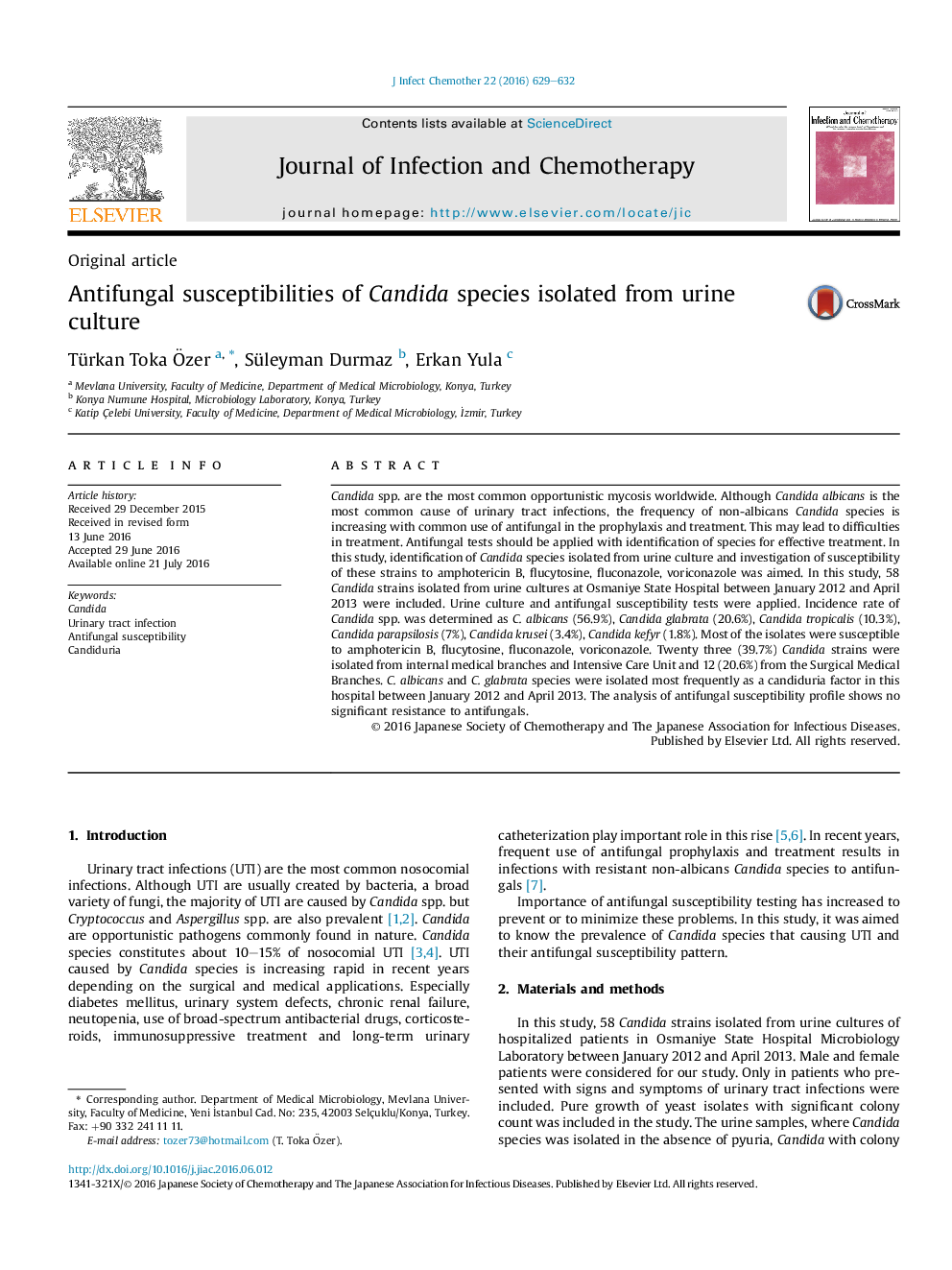| Article ID | Journal | Published Year | Pages | File Type |
|---|---|---|---|---|
| 3376658 | Journal of Infection and Chemotherapy | 2016 | 4 Pages |
Candida spp. are the most common opportunistic mycosis worldwide. Although Candida albicans is the most common cause of urinary tract infections, the frequency of non-albicans Candida species is increasing with common use of antifungal in the prophylaxis and treatment. This may lead to difficulties in treatment. Antifungal tests should be applied with identification of species for effective treatment. In this study, identification of Candida species isolated from urine culture and investigation of susceptibility of these strains to amphotericin B, flucytosine, fluconazole, voriconazole was aimed. In this study, 58 Candida strains isolated from urine cultures at Osmaniye State Hospital between January 2012 and April 2013 were included. Urine culture and antifungal susceptibility tests were applied. Incidence rate of Candida spp. was determined as C. albicans (56.9%), Candida glabrata (20.6%), Candida tropicalis (10.3%), Candida parapsilosis (7%), Candida krusei (3.4%), Candida kefyr (1.8%). Most of the isolates were susceptible to amphotericin B, flucytosine, fluconazole, voriconazole. Twenty three (39.7%) Candida strains were isolated from internal medical branches and Intensive Care Unit and 12 (20.6%) from the Surgical Medical Branches. C. albicans and C. glabrata species were isolated most frequently as a candiduria factor in this hospital between January 2012 and April 2013. The analysis of antifungal susceptibility profile shows no significant resistance to antifungals.
